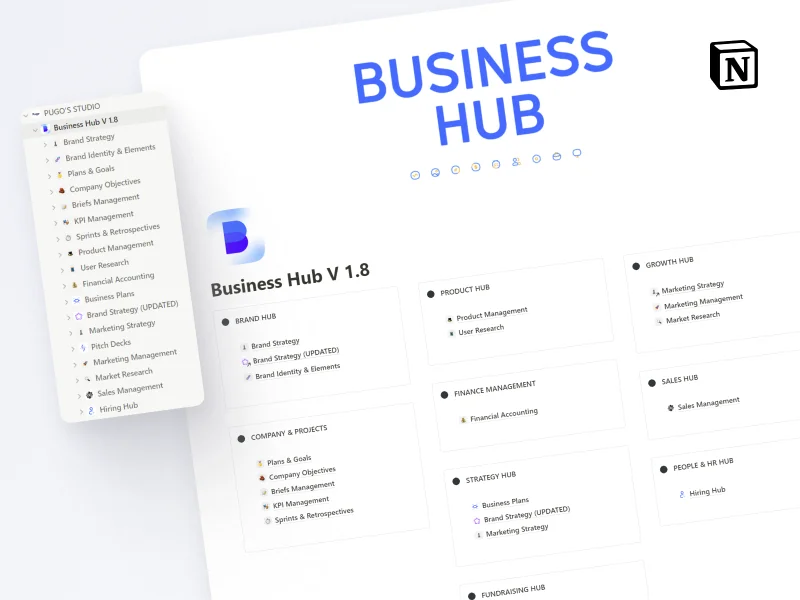What is Decision Making?
Decision making is the process of selecting the best course of action among various alternatives to achieve a specific goal. It involves analyzing information, considering potential outcomes, and choosing the most suitable option based on available resources and desired outcomes.

Best Methods of Decision Making
When it comes to making decisions, there are various approaches that individuals and organizations can adopt. Each method offers distinct advantages and is suitable for different situations. Let’s explore the best methods of decision making:
Rational Decision Making
Rational decision making involves a systematic and analytical approach to making choices. This method relies on logic, data, and a thorough analysis of the pros and cons of each option. The goal is to maximize the benefits and minimize risks, ensuring that the decision is well-informed and calculated.
Key Steps in Rational Decision Making:
- Clearly define the decision to be made and the desired outcome.
- Gather relevant data and information related to the decision.
- Analyze the data and weigh the advantages and disadvantages of each option.
- Consider potential outcomes and consequences of the decision.
- Select the option that aligns best with the goals and yields the most favorable results.
Rational decision making is commonly used in complex situations where the stakes are high and where a structured approach is necessary to achieve the desired outcomes.
Intuitive Decision Making
Intuitive decision making relies on gut feelings, instincts, and past experiences to make choices quickly. This method is less structured compared to rational decision making but can be highly effective in situations where time is limited, and experience plays a significant role.
Key Aspects of Intuitive Decision Making:
- Trusting one’s instincts and relying on past experiences to guide decisions.
- Making quick decisions based on a “gut feeling” or intuitive sense of what is right.
- Emphasizing creativity and out-of-the-box thinking in decision making.
- Being open to risks and embracing uncertainty when necessary.
Intuitive decision making is often employed by seasoned professionals and leaders who have developed a strong sense of judgment through years of experience and exposure to various scenarios.
Collaborative Decision Making
Collaborative decision making involves involving multiple stakeholders in the decision-making process. This method encourages diverse perspectives and collective wisdom, fostering buy-in and creating a sense of ownership among team members.
Steps to Implement Collaborative Decision Making:
- Identify relevant stakeholders and involve them in the decision-making process.
- Encourage open communication and active participation from all participants.
- Consider different viewpoints and opinions to ensure a comprehensive evaluation of options.
- Facilitate discussions and deliberations to reach a consensus or compromise.
Collaborative decision making is valuable in situations where decisions have far-reaching consequences and where diverse expertise is needed to make informed choices. It promotes a sense of shared responsibility and strengthens team cohesion.
By understanding these best methods of decision making, individuals and organizations can make more effective and well-rounded decisions, leading to better outcomes and successful results. Each method has its strengths, and the choice of which to use depends on the specific circumstances and context of the decision at hand.

What is a Decision Making Template?
A decision-making template is a valuable tool that provides a structured framework to facilitate informed and consistent decision making. It serves as a guide throughout the decision-making process, ensuring that all critical factors are carefully considered and analyzed before arriving at a conclusion.
Free Decision Making Templates
Various decision making templates are available, each catering to different decision-making scenarios. Here are some commonly used templates:
Decision Matrix Template
The decision matrix template is ideal for situations where you need to evaluate multiple alternatives based on various criteria. By assigning weights to different criteria, the template helps you rank and compare options objectively, ultimately assisting in choosing the best alternative that aligns with your priorities.
Using a decision matrix, a person or group can objectively choose among a set of options and pick the one that meets their needs based on important factors. There are a variety of methods, but they tend to fall into two main categories: weighted and unweighted. Learn how to identify which type of decision matrix you should use, how to create one, and download free templates.

Assumption Grid Template
Most business models and decisions are based on assumptions. Whether you’re a startup, an enterprise company, or somewhere in between, you’re probably making assumptions almost every day. But when resources and time are on the line, it can be hard to decide whether your assumptions are worth making — and if you’re making tough judgment calls, it’s not always easy to know which assumptions to test.
Developed by IBM, an Assumption Grid is a powerful tool that helps you decide which assumptions from your business model you should test first. The grid plots your assumptions on two axes: high impact assumptions for which you have little information, and low impact assumptions for which you have little information. Visualizing your assumptions can empower you to make judgment calls, prioritize, mitigate risk, and overcome uncertainties.
Once you’ve placed a variety of items on the grid, the Assumption Grid becomes a great conversational tool. Bring your team into a room and have them go over the results. New assumptions might materialize, or you might move items around on the grid.
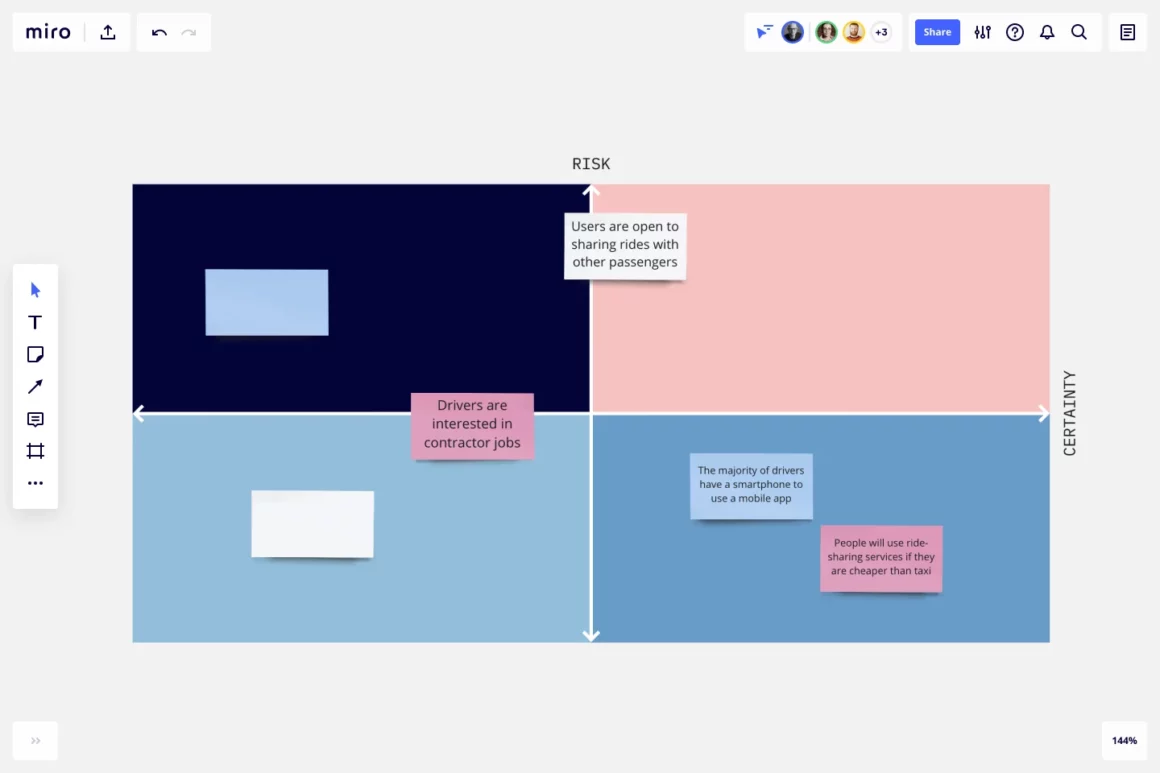
Competitive Analysis Template
Get a leading edge over the competition by using the Competitor Analysis template. Identify the other companies you’re competing with and how your product or service compares.
The Competitive Analysis template is where you will analyze and evaluate the competitive landscape for products, services, and companies.
With a simple competitive analysis template, you will be able to answer these questions:
- Who are the other companies you’re competing with?
- How does your product or service compare?
- What makes you stand out?
- What are your competitors doing well that you can learn from?
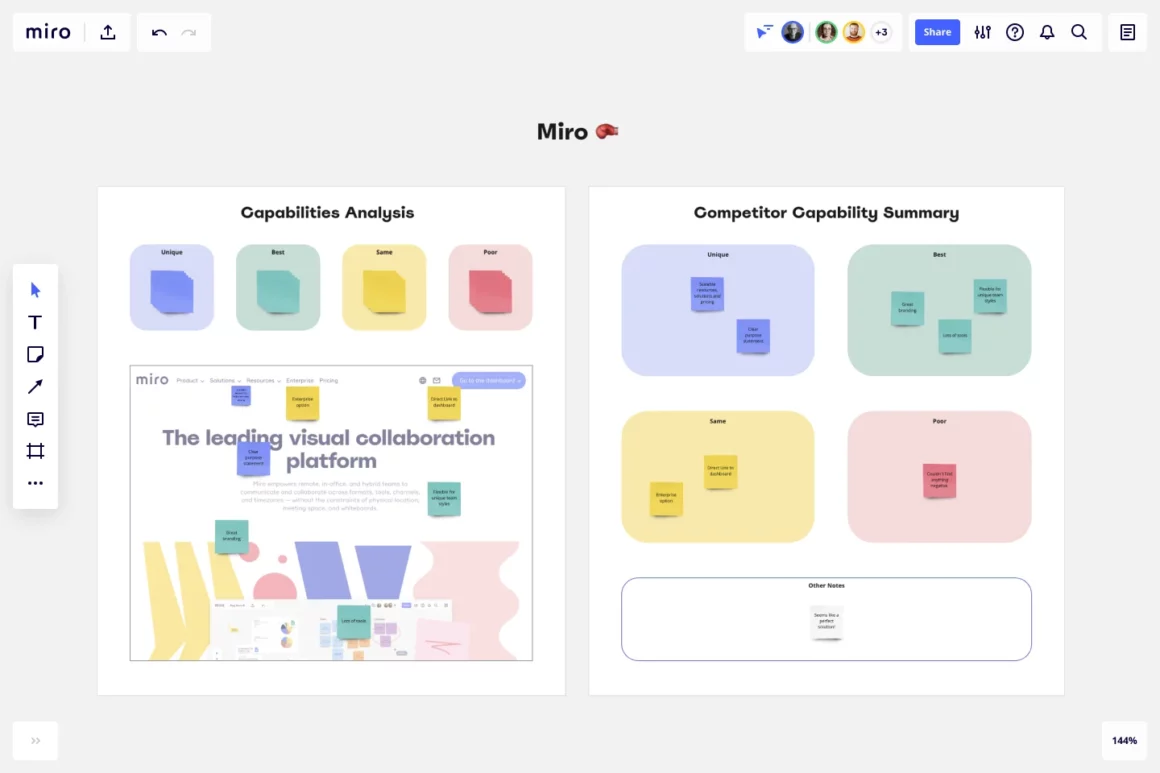
RACI Matrix Template
The RACI Chart Template is an essential management tool that helps teams keep track of roles and responsibilities and avoid confusion during projects. From complex, cross-functional team projects to internal, ongoing tasks, a RACI matrix enables you to clarify roles and delegate tasks, bringing your team together to execute your project.
Project managers and team leads can use this tool to align with stakeholders and project members, ensuring everyone is on the same page and aware of their role and responsibility.
What does RACI stand for?
RACI stands for Responsible, Accountable, Consulted, and Informed. Each of these words describes the person’s role, and the last two are differentiated by what type of communication they should engage in during the project.
- Responsible: Who is responsible for the work? They must finish a given project, process, or element of a project.
- Accountable: Who is accountable for the outcome and the process? They must be accountable for the completion of the task. As a recommended best practice, there should only be one accountable person assigned to a given project. This person serves as all stakeholders’ point of contact throughout the project.
- Consulted: Who should you consult if there is a problem with the project? They must provide information to stakeholders. If stakeholders have suggestions about changes that need to be made, or if they encounter issues, they report to the Consulted.
- Informed: Who should you inform if you make a change to the project? They must be kept informed of progress. Their role is not necessary to provide feedback or suggest changes. However, it would be best if you kept them apprised of any changes, roadblocks, problems, or milestones.
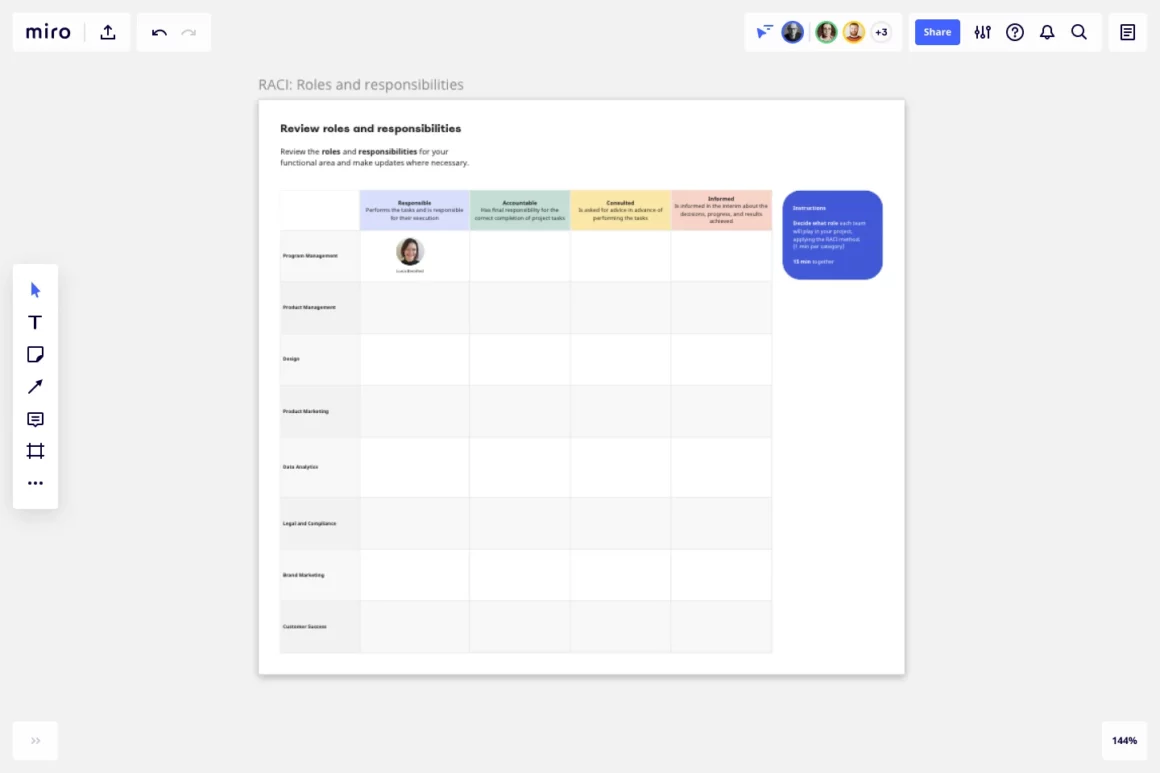
Pros and Cons Template
The pros and cons template is a straightforward yet effective tool for decision making. It involves listing the advantages and disadvantages of each option. This approach allows you to visually compare the positive and negative aspects of each choice, aiding in making a well-balanced decision.
Use the Pros and Cons List Template to outline all of the advantages and disadvantages of a specific decision. Consider what benefits, favorable outcomes, and wins you anticipate, as well as what costs, risks, or adverse consequences your decision has.
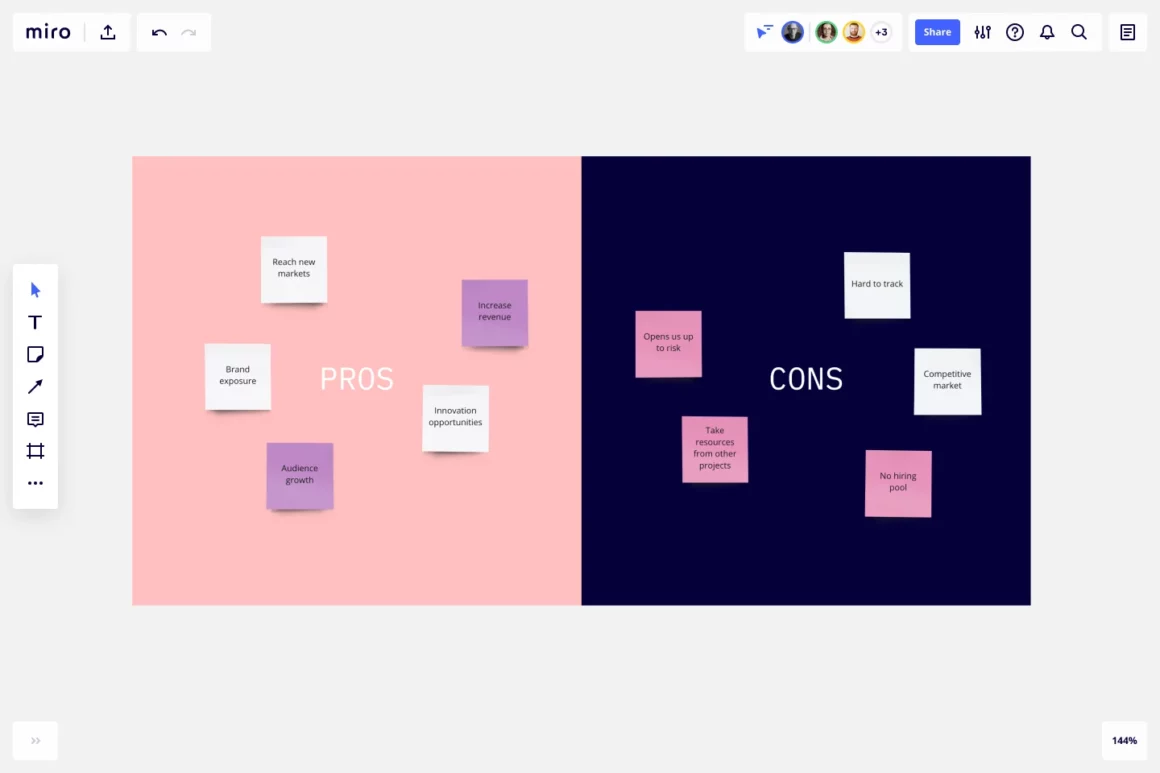
Cost-Benefit Analysis Template
Assess pros and cons and improve your informed decision-making.
The cost-benefit analysis template is particularly useful when you need to assess the financial implications of different options. By analyzing the costs and benefits associated with each alternative, you gain a clear understanding of potential gains and expenses, helping you make financially sound decisions.
Every business decision comes with potential rewards, as well as potential risks. Your decision might expand the business, introduce a new product, or tap into a new supply chain, but it also might cost the organization precious time, money, or social capital. Without a systematic way of analyzing costs and benefits, you may find making decisions an arduous task.
Cost benefit analysis (CBA) is an analytical tool that helps your team assess the pros and cons of moving forward with a business proposal. This technique helps you decide the best course of action to take with a new project by analyzing each option.
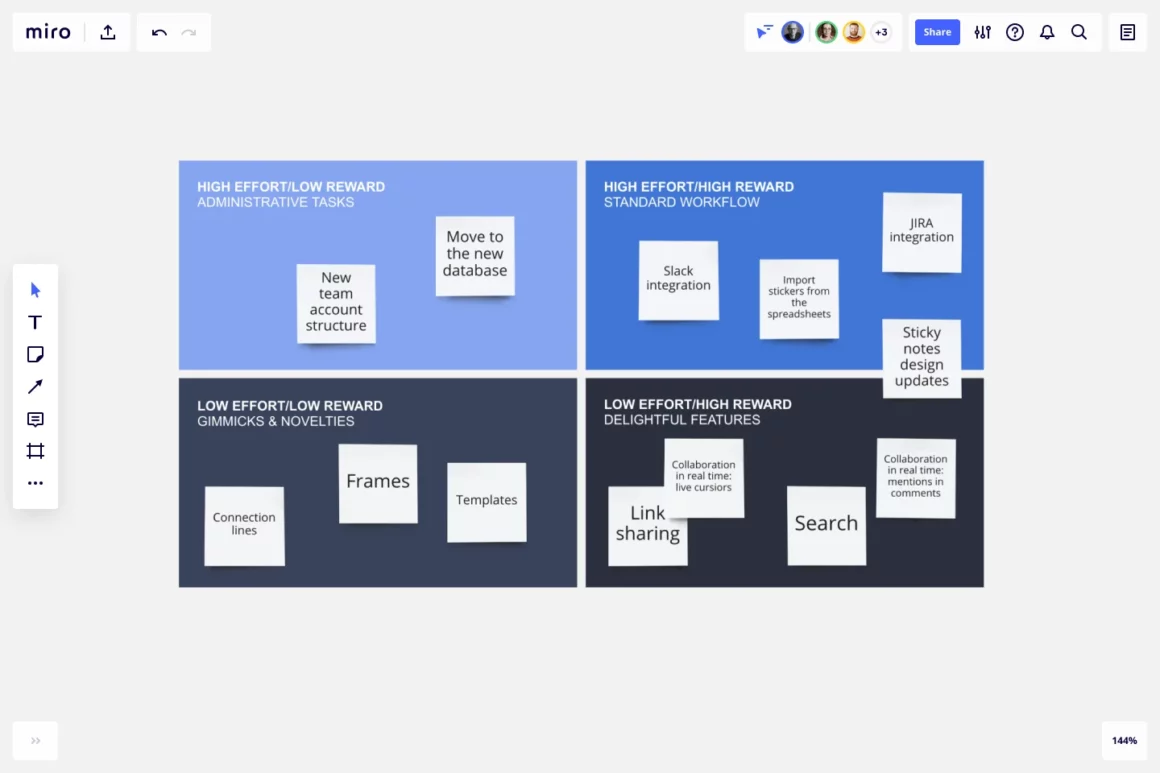
SWOT Analysis Template for Notion
A SWOT analysis template evaluates the strengths, weaknesses, opportunities, and threats of each option under consideration. This template enables decision-makers to identify the internal and external factors that may influence the success of each choice. By understanding these factors, you can make more informed decisions and capitalize on opportunities while addressing potential challenges.
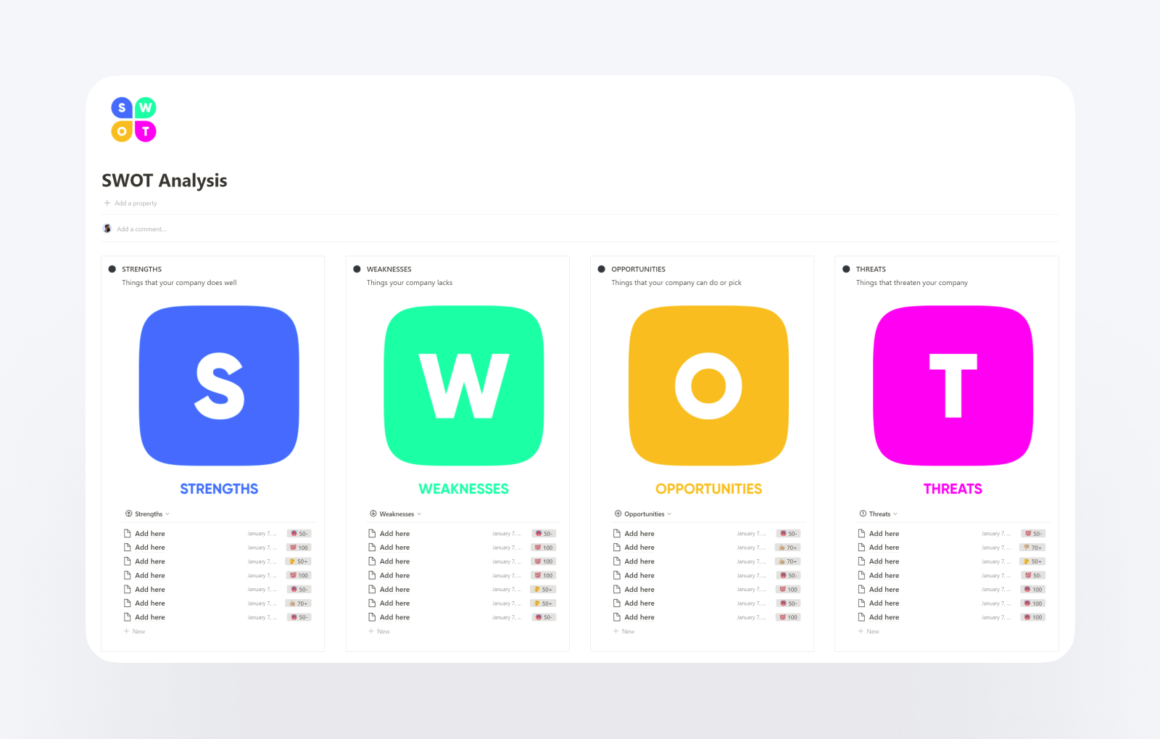
10-10-10 Decision Making Template
Making better decisions is not hard. You need to think about the long-term consequences instead of short-term emotions. To help you do this, you can use the 10-10-10 rule.
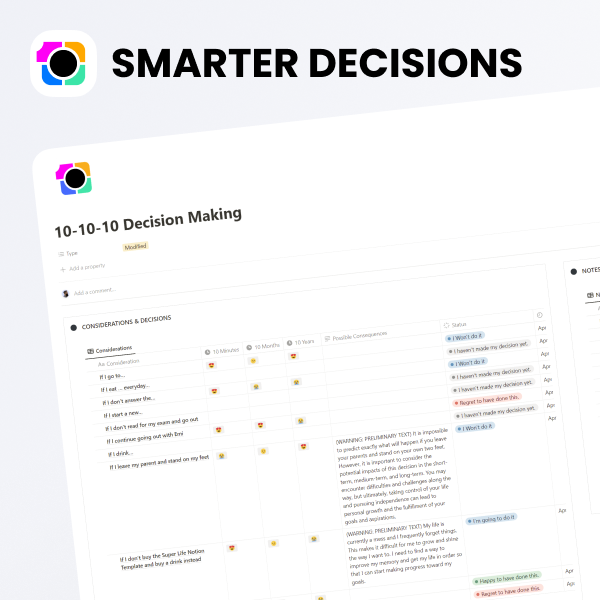
Using decision making templates streamlines the decision-making process and enhances the quality of decisions made. It ensures that critical information is not overlooked, reduces the impact of cognitive biases, and provides a consistent and systematic approach to tackling various decisions.
Decision making templates are powerful aids in the decision-making process, offering structured frameworks for analyzing alternatives and assessing critical factors. Whether you need to rank alternatives, weigh pros and cons, evaluate costs and benefits, or conduct a SWOT analysis, using the appropriate decision making template can lead to more informed and effective decisions. Embrace the power of decision making templates to enhance your decision-making prowess and achieve better outcomes in both professional and personal endeavors.
Dot Voting Template
Better prioritize items and make decisions as a group. The Dot Voting Template helps you bring teams to an agreement effortlessly.
Dot voting (also known as “sticker voting,” “dotmocracy,” or “voting with dots”) helps teams improve decision-making, making sure every voice is heard and taken into account. A dot voting method is also an excellent tool when teams need to prioritize what action to take first when presented with many different options.

Decision Tree Template
The decision tree template, also known as a decision tree diagram, helps teams better outline potential outcomes and choices before committing to a decision.
Starting with a central topic, a decision tree links words and boxes to show two options and the outcome of your decision-making. The shape of the tree represents the final outcome if the line of decisions was followed. The decision tree template can be used to strategically assess the decision-making process and possible outcomes before investing time and money in a decision.
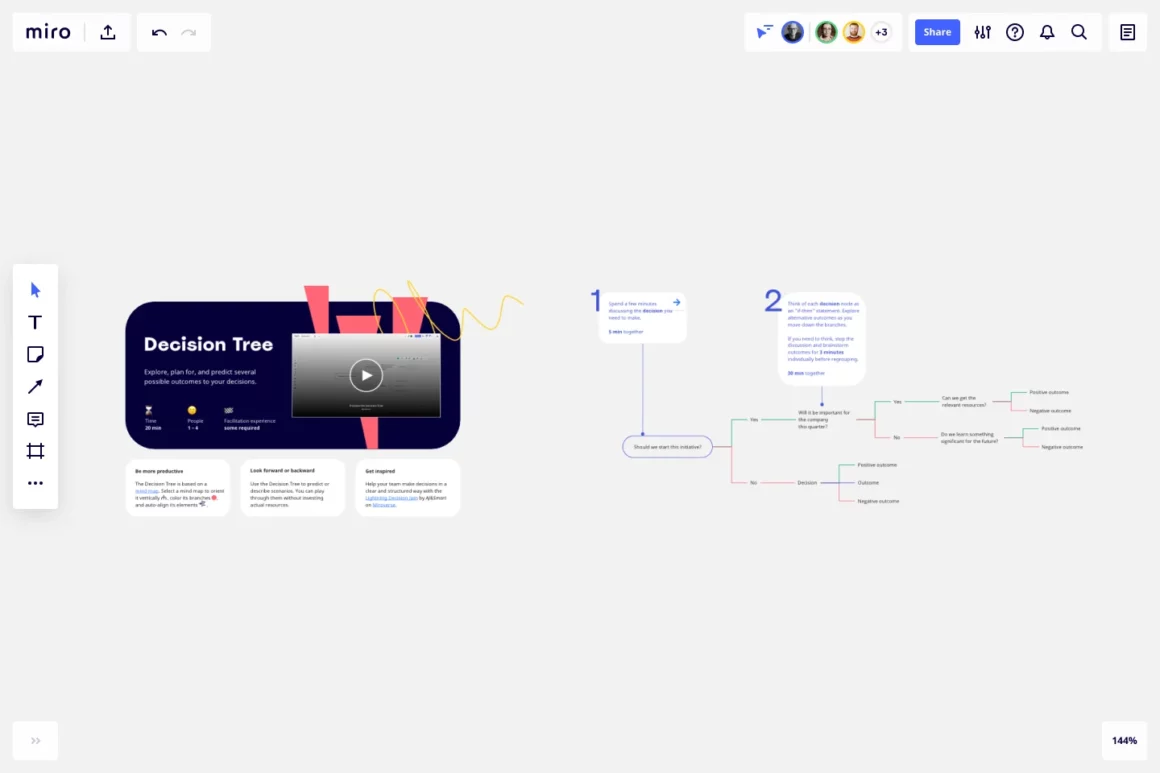
How to Make Better Decisions
Making better decisions is a valuable skill that can greatly impact personal and professional success. Whether you’re facing a complex problem or considering a significant life choice, following these steps can lead to more effective decision-making:

1. Clarify Objectives
Begin by clearly defining the objectives you want to achieve with the decision. Understanding your goals provides a guiding light throughout the decision-making process. Take the time to assess what you hope to accomplish and what outcomes you desire. This step helps you stay focused on the most critical factors and prevents distractions from clouding your judgment.
2. Gather Information
Thoroughly research and gather relevant data, facts, and insights related to the decision. Informed decisions are more likely to lead to successful outcomes. Look for credible sources of information and consider both quantitative and qualitative data. The more comprehensive your understanding of the situation, the better equipped you’ll be to make an informed choice.
3. Analyze Alternatives
Identify various options and evaluate their potential consequences. Consider the risks, benefits, and potential impact of each alternative. Weigh the pros and cons of each choice and assess how well they align with your objectives. This step helps you understand the potential outcomes of each decision and allows you to make a more rational choice.
4. Consider Values and Ethics
Assess how each option aligns with your values and ethical principles. Making decisions that are consistent with your core values ensures long-term satisfaction and peace of mind. Consider the impact of your choices not only on yourself but also on others and the broader community. Decisions that align with your values are more likely to bring about positive and meaningful results.
5. Seek Input
Don’t hesitate to seek advice and input from others, especially those with expertise in the area. Diverse perspectives can shed new light on the situation and offer insights you might not have considered. Consult with colleagues, friends, mentors, or professionals who have experience in the relevant field. Constructive feedback and alternative viewpoints can help you see the bigger picture and make well-rounded decisions.
6. Take Your Time
Avoid rushing into decisions, especially when faced with complex or high-stakes choices. Allow yourself the time needed to weigh the options carefully. Sometimes, stepping away from the decision for a while and returning with a fresh perspective can lead to better insights. Be patient with the process, and don’t feel pressured to decide hastily.
7. Evaluate and Learn
After making a decision, take the time to evaluate its outcomes. Reflect on the results and learn from the experience. If the decision doesn’t yield the desired results, use it as a learning opportunity for future choices. Continuously improving your decision-making skills will lead to better outcomes over time.
By following these steps and refining your decision-making process, you can enhance your ability to make sound, thoughtful, and effective decisions in all aspects of life. Making better decisions empowers you to navigate challenges with confidence and achieve your goals more successfully.
Decision-Making Styles and Personalities
Understanding different decision-making styles and personalities can shed light on how individuals approach choices and solve problems. Let’s explore four common decision-making styles:

1. Analytical Decision Makers
Individuals with analytical personalities rely on data, evidence, and logical reasoning to make well-considered choices. They carefully assess all available information, scrutinize details, and analyze potential outcomes before arriving at a decision. Analytical decision makers prioritize accuracy and objectivity, seeking to minimize risks and uncertainties. Their cautious approach ensures thorough evaluation, making them reliable decision makers in complex and critical situations.
2. Emotional Decision Makers
Emotional decision makers, as the name suggests, are significantly influenced by their emotions when making choices. Their decisions are often guided by feelings, gut instincts, and personal values. Emotions play a central role in shaping their perceptions and responses to various options. While emotional decision makers can be empathetic and compassionate, they may also experience challenges in remaining objective during decision-making processes. Strategies to manage emotions, such as taking time to reflect and seeking external input, can help emotional decision makers achieve more balanced and favorable outcomes.
3. Intuitive Decision Makers
Intuitive decision makers possess a natural flair for recognizing opportunities and understanding situations without necessarily relying on extensive data or analysis. They trust their instincts and often make decisions based on hunches or gut feelings. Intuitive individuals excel in quickly grasping complex scenarios, which can lead to decisive and agile choices. However, their decisions may sometimes lack detailed rationale, making it essential for them to validate their intuitions with additional information when necessary.
4. Deliberate Decision Makers
Deliberate decision makers take their time to weigh all available options carefully. They engage in a systematic evaluation of alternatives, assessing the pros and cons of each choice. Deliberate thinkers seek to minimize risks and uncertainties by considering various scenarios and potential outcomes. Their cautious approach ensures that they make well-informed decisions based on a comprehensive understanding of the situation. While their decision-making process may be more time-consuming, deliberate thinkers tend to make choices with a high level of confidence.
Understanding the diversity of decision-making styles and personalities allows us to appreciate different perspectives and approaches to problem-solving. In both personal and professional settings, recognizing these styles can enhance communication, collaboration, and decision-making processes among individuals with varied preferences. Embracing these differences fosters a holistic and adaptable decision-making environment, contributing to better outcomes and collective success.
Decision Making in Business and Leadership
In the dynamic world of business and leadership, effective decision making is a cornerstone of success. Let’s delve into three essential aspects of decision making in these contexts:

1. Decision Making in Leadership Roles
Leadership roles demand the ability to make informed and strategic decisions that steer teams and organizations towards success. Effective leaders use a combination of analytical thinking, emotional intelligence, and vision to make well-considered choices. They actively seek input from team members, foster a collaborative environment, and embrace diverse perspectives. Leaders understand that decisions impact the entire organization and, as such, they consider both short-term and long-term implications. By cultivating a culture of open communication and learning from both successes and failures, leaders build a foundation for successful decision making that drives growth and innovation.
2. The Role of Emotions in Business Decision Making
While business decisions often involve data analysis and rational reasoning, emotions also play a significant role. Emotions can influence how individuals perceive situations, assess risks, and respond to challenges. Recognizing and understanding the interplay between emotions and decision making allows business professionals to strike a balance between rationality and emotional intelligence. Emotionally intelligent decision makers acknowledge their emotions and those of others, using this awareness to make empathetic and constructive choices. By integrating emotional intelligence into the decision-making process, businesses can foster stronger relationships with customers, employees, and stakeholders, leading to sustainable growth and success.
3. Decision Making in Crisis Management
In times of crisis, decision making becomes even more critical. Crisis situations demand quick thinking, adaptability, and a clear focus on priorities. Effective crisis management involves a proactive approach, where leaders anticipate potential challenges and prepare contingency plans. When faced with unexpected events, leaders must remain calm and collected, basing their decisions on available information and expert advice. By embracing a transparent and open communication style, leaders can rally their teams to respond to crises with resilience and cohesion. Post-crisis evaluations also offer valuable insights for refining decision-making processes, enabling organizations to learn from adversity and emerge stronger.
Decision making is an integral part of business and leadership, shaping the trajectory of organizations and the well-being of teams. Successful leaders understand that effective decision making goes beyond data analysis—it embraces emotional intelligence, collaboration, and adaptability. By cultivating a culture that values diverse perspectives and encourages learning, businesses can navigate challenges with confidence and seize opportunities for growth. In times of crisis, strategic decision making becomes even more vital, requiring leaders to act swiftly and decisively. By incorporating these essential elements into their decision-making processes, businesses and leaders can pave the way for a future defined by resilience, innovation, and prosperity.
Cognitive Biases and Decision Making
Cognitive biases are inherent patterns of thought that can significantly impact decision making, leading to errors and deviations from rational judgment. Let’s explore the influence of cognitive biases on decision making and how to mitigate their effects:

Understanding Cognitive Biases
Cognitive biases are mental shortcuts that our brains use to process information quickly. While they can be helpful in some situations, they can also lead to irrational decisions and judgment errors. Common cognitive biases include:
- Confirmation Bias: The tendency to seek and favor information that confirms pre-existing beliefs or opinions, while ignoring contradictory evidence.
- Anchoring Bias: Relying too heavily on the first piece of information encountered when making decisions, even if it’s irrelevant or inaccurate.
- Availability Heuristic: Basing decisions on immediate examples or readily available information, rather than on objective evidence.
- Overconfidence Bias: Overestimating one’s abilities, knowledge, or the accuracy of predictions, leading to riskier decisions.
- Sunk Cost Fallacy: Continuing with a course of action because of investments made, despite evidence suggesting that it’s not the best choice.
- Bandwagon Effect: Adopting beliefs or making decisions based on the popularity or prevalence of a particular idea or behavior.
By understanding these cognitive biases, decision makers can identify when they might be influencing their judgment and take steps to mitigate their effects.
Overcoming Decision Fatigue
Decision fatigue refers to the deteriorating quality of decisions made after a prolonged period of decision making. As individuals make more choices throughout the day, their mental energy and willpower gradually deplete, leading to suboptimal decisions. Here are some techniques to combat decision fatigue:
- Prioritize Decisions: Identify the most critical decisions and tackle them when your mind is fresh and alert.
- Establish Routines: Reduce decision-making load by establishing routines for repetitive tasks, freeing up mental capacity for more important decisions.
- Delegate Decision Making: Delegate decisions when possible, empowering others to take ownership and share the decision-making burden.
- Limit Options: Reduce the number of choices available for non-essential decisions to avoid decision paralysis.
- Take Breaks: Schedule regular breaks throughout the day to recharge your mind and regain mental clarity.
- Sleep and Nutrition: Prioritize adequate sleep and nourishing meals to ensure optimal cognitive function and decision-making abilities.
By employing these strategies, decision makers can preserve their cognitive resources and make more thoughtful, well-considered choices.
Cognitive biases and decision fatigue are significant challenges that can impact the quality of decision making. Understanding and recognizing cognitive biases allows decision makers to be more objective and avoid common pitfalls. By implementing techniques to combat decision fatigue, individuals can maintain their decision-making capacity and make more effective choices throughout the day. Ultimately, a combination of awareness, mindfulness, and strategic planning can enhance decision making and lead to more successful outcomes.
Decision Making in Technology and Innovation
Technology and innovation are at the forefront of shaping our modern world. Let’s explore how decision making plays a crucial role in this dynamic landscape:
Decision Making in Product Development
Product development is a complex process that requires careful decision making to create successful and marketable products. Product managers, along with their teams, face numerous choices throughout the development cycle. Here’s how they make data-driven decisions to meet customer needs:
- Market Research: Product managers conduct thorough market research to understand customer preferences, pain points, and demands. This data-driven approach helps identify gaps in the market and potential opportunities for innovation.
- User Feedback: Gathering feedback from early users and beta testers allows product managers to make iterative improvements and refine features based on real-world usage.
- A/B Testing: A/B testing involves comparing two versions of a product or feature to determine which performs better. This data-driven approach provides insights into user behavior and preferences.
- Cost-Benefit Analysis: Product managers conduct cost-benefit analyses to assess the potential return on investment for new features or product enhancements.
- Competitive Analysis: Analyzing competitors’ products helps product managers position their offerings effectively and identify areas where they can differentiate themselves.
- Agile Methodology: Many product development teams follow agile methodologies, which involve incremental and iterative development. This approach allows for flexibility and adaptation to changing market conditions.
By combining data-driven insights with creativity and innovation, product development teams can create products that resonate with customers and stand out in the market.
Innovative Decision Making
Innovation is about challenging the status quo and pushing boundaries to create something new and groundbreaking. Decision making in innovative companies and among visionary individuals involves a unique approach:
- Embracing Risk: Innovation often involves taking calculated risks, as there are no guarantees of success. Decision makers in innovative environments embrace uncertainty and are willing to explore uncharted territory.
- Fostering a Culture of Innovation: Innovative companies prioritize a culture that encourages creativity, experimentation, and open communication. Employees are empowered to share ideas and challenge existing norms.
- Human-Centered Design: Decision makers focus on human-centered design principles, ensuring that products and solutions address real user needs and pain points.
- Iterative Learning: Innovation is an ongoing process of learning and iteration. Decision makers gather feedback, learn from failures, and continuously improve their offerings.
- Strategic Vision: While innovation involves creativity, it is guided by a strategic vision. Decision makers align their innovative efforts with the company’s overall goals and long-term objectives.
- External Partnerships: Collaborations with external partners, such as startups, research institutions, or industry experts, can fuel innovation and bring fresh perspectives.
Innovative decision making requires a balance between risk-taking and strategic vision, allowing companies and individuals to disrupt industries, drive change, and make a lasting impact.
In the ever-evolving landscape of technology and innovation, decision making is a driving force behind successful product development and groundbreaking ideas. By utilizing data-driven insights, market research, and user feedback, product managers can craft products that meet customer needs. In the realm of innovation, embracing risk, fostering a culture of creativity, and having a clear strategic vision are essential for driving transformative change. Through informed decision making and a willingness to challenge norms, technology and innovation continue to shape our future.
Decision Making in Personal Finance
Personal finance decisions have a significant impact on our financial well-being and long-term security. Let’s explore the key aspects of decision making in personal finance:
Financial Decision Making for a Secure Future
Planning and managing personal finances are essential for achieving financial security and meeting life goals. Here’s how to make sound financial decisions:
- Budgeting: Create a budget to track your income and expenses. Understanding where your money goes helps you make informed decisions about spending and saving.
- Emergency Fund: Establish an emergency fund to cover unexpected expenses. Having a financial safety net provides peace of mind during challenging times.
- Investments: Educate yourself about various investment options, such as stocks, bonds, mutual funds, and real estate. Diversifying your investment portfolio can help manage risk and maximize returns.
- Retirement Planning: Start planning for retirement early and contribute regularly to retirement accounts like 401(k)s or IRAs. Compound interest can significantly boost your retirement savings.
- Insurance Coverage: Assess your insurance needs, including health, life, home, and auto insurance. Adequate coverage protects you and your loved ones from financial hardships.
- Debt Management: Develop a strategy to manage and reduce debts. Prioritize high-interest debts first and consider debt consolidation options if necessary.
- Financial Goals: Set clear financial goals, such as buying a home, funding education, or starting a business. Having specific objectives helps guide your financial decisions.
- Seek Professional Advice: Consult with financial advisors or planners to get personalized guidance based on your unique financial situation and goals.
Ethical Considerations in Personal Finance
Ethics play a crucial role in personal finance decisions, impacting both your financial outcomes and the world around you. Consider the ethical dimensions of the following areas:
- Investing: Ethical investing involves aligning your investments with your values. Research companies and funds to ensure they meet your ethical standards and social responsibility criteria.
- Consumer Choices: Make ethical consumer choices by supporting businesses that adhere to sustainable and socially responsible practices.
- Debt Management: Prioritize ethical lending institutions that offer fair interest rates and transparent terms for loans and credit.
- Charitable Donations: When making charitable contributions, research organizations to ensure they use donations responsibly and have a positive impact on the causes they support.
- Avoid Fraud and Scams: Stay vigilant against financial scams and fraudulent schemes that exploit individuals’ trust and vulnerability.
- Fair Labor Practices: Consider ethical aspects when investing in companies by assessing their labor practices, worker rights, and treatment of employees.
By incorporating ethical considerations into your financial decision making, you contribute to a more sustainable and equitable financial system while aligning your financial choices with your values.
In the realm of personal finance, decision making plays a critical role in shaping our financial future. By following prudent financial practices, such as budgeting, investing, and planning for retirement, we can work towards achieving financial security and meeting our goals. Additionally, ethical considerations in personal finance allow us to make choices that not only benefit us but also contribute to a more just and sustainable world. Being mindful of the impact of our financial decisions empowers us to create a positive influence on ourselves and the broader community.
Wrapping up
In conclusion, decision-making is a fundamental aspect of both personal and professional life. Whether you’re running a business, leading a team, or managing your finances, the ability to make well-informed and effective decisions is crucial for success.
Throughout this comprehensive guide, we’ve explored various facets of decision-making, from understanding different decision-making styles and personalities to recognizing cognitive biases that can influence our choices. We’ve also delved into decision-making in specific contexts, such as business, technology, innovation, and personal finance, providing valuable insights and strategies to navigate these areas with confidence.
Moreover, we’ve introduced decision-making templates that serve as powerful tools to guide your decision-making process. From decision matrices to SWOT analyses, these templates offer structured frameworks to ensure you consider all critical factors and arrive at the best possible outcomes.
Remember, decision-making is a skill that can be honed and refined over time. By clarifying objectives, gathering information, analyzing alternatives, and seeking input, you can empower yourself to make better decisions in any situation.
As you continue your journey towards becoming a more effective decision-maker, don’t forget to check out our other resources, such as the comprehensive guide to the Business Model Canvas and the collection of 50+ Business and Startups Notion Templates. These invaluable resources will equip you with the tools and insights you need to excel in your personal and professional endeavors.
Now is the time to take action, implement what you’ve learned, and embrace the power of decision-making to shape a successful and fulfilling future. Make each decision count, and let your choices lead you towards your goals and aspirations. Happy decision-making!
Ready to take your business to the next level? Check out our comprehensive guide on the Business Model Canvas!
Looking for more business resources to boost your productivity and efficiency? Don’t miss our curated collection of 50+ Business and Startups Notion Templates!
These templates are designed to streamline various aspects of your business, from project management and finance tracking to marketing strategies and customer relationship management. Whether you’re a founder, entrepreneur, or business professional, these templates will help you stay organized, focused, and on top of your game. Unlock the full potential of Notion and take your business to new heights with these powerful resources. Check out the templates now and give your business the tools it needs to thrive!




